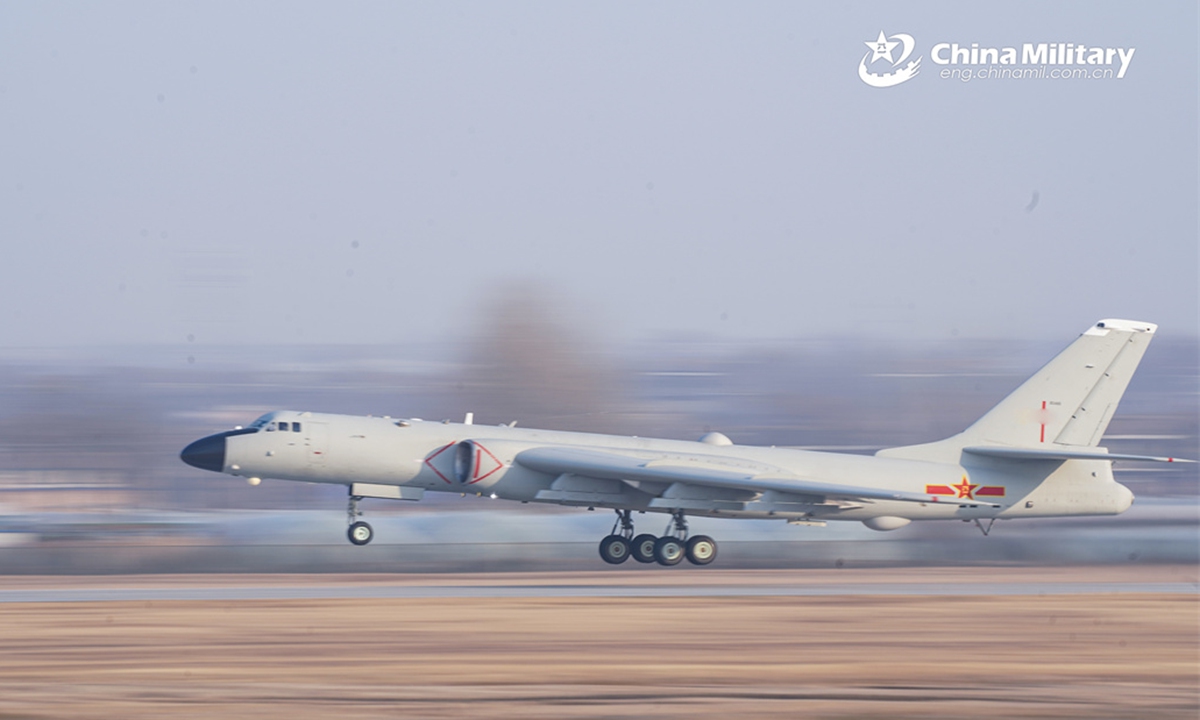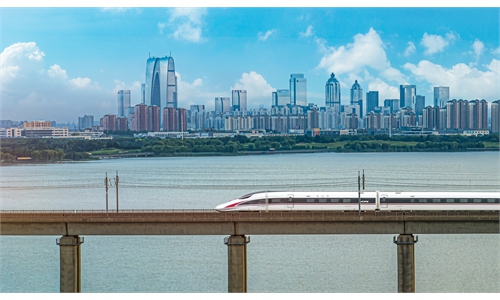
An H-6 bomber attached to an aviation regiment with the air force under PLA Central Military Command takes off during a round-the-clock penetrating strike training exercise. The exercise was held recently under complex weather conditions to temper the troops' combat capability. Photo: eng.chinamil.com.cn
CNN, citing North American Aerospace Defense Command (NORAD), reported that two Chinese H-6 bombers on Wednesday appeared, for the first time in Alaska's Air Defense Identification Zone (ADIZ), alongside two Russian bombers,. The report stated that "Russian flights into Alaska's ADIZ are not uncommon… But the presence of Chinese aircraft appears to be a new development."
As journalist and former military personnel, I believe China needs the capability to deploy aircraft closer to US coastline. Having Chinese close-in reconnaissance and bomber aircraft to conduct freedom of navigation operations there could exert pressure, altering the current dynamic of the US employing maritime and aerial tools aggressively to pressurize China. Ultimately, this could compel the US to exercise restraint in its "freedom of navigation" operations near China.
Our aim is not to strategically provoke the US, but rather to prompt Washington to consider international fairness and justice, restraining its hegemonic and aggressive behaviors.
It must be pointed out that developing such capabilities is extremely challenging, as we lack military bases in the Western Hemisphere. Chinese aircraft currently rely on Russia's easternmost and northernmost military bases to approach the US, through joint China-Russian operations. Establishing military bases in South America or the Caribbean in the near-to-medium term is fraught with difficulties and largely impractical. From the Chinese mainland, the H-6N bomber can reach over 5,000 kilometers with aerial refueling, exerting pressure on US military strongholds like Guam. But its political significance is limited. China needs to apply direct pressure on the US mainland, with greater impact if this pressure can be exerted on the East Coast of the US.
In the foreseeable future, China's ability to reach that goal hinges largely on aircraft carriers. However, conventional-powered aircraft carriers are inadequate for sustaining prolonged presence near the US. Nuclear-powered carriers are essential for such strategic operations.
Currently, China's three aircraft carriers are conventional-powered, but there are foreign reports and speculation suggesting China is in the process of developing nuclear-powered carriers. If these speculations hold true, taking into account the engineering timelines and the time required to achieve combat readiness, it would likely take approximately 10 years for China's nuclear-powered carriers to become fully operational for strategic missions. During these 10 years, significant technological advancements will also shape the strategic competition between China and the US in terms of "freedom of navigation" and aerial maneuvers.
In general, reasoning with the US is not sufficient for China. Various forms of pressure must also be applied to prompt the US to consider China's calls for fairness and justice more seriously. We advocate peace, but peace cannot be achieved through retreat or pleading. Therefore, I repeatedly emphasize that China should accelerate the accumulation of nuclear warheads and strengthen our ultimate strategic deterrent against the US. We must never be naive.
The author is a Chinese media professional. opinion@globaltimes.com.cn




